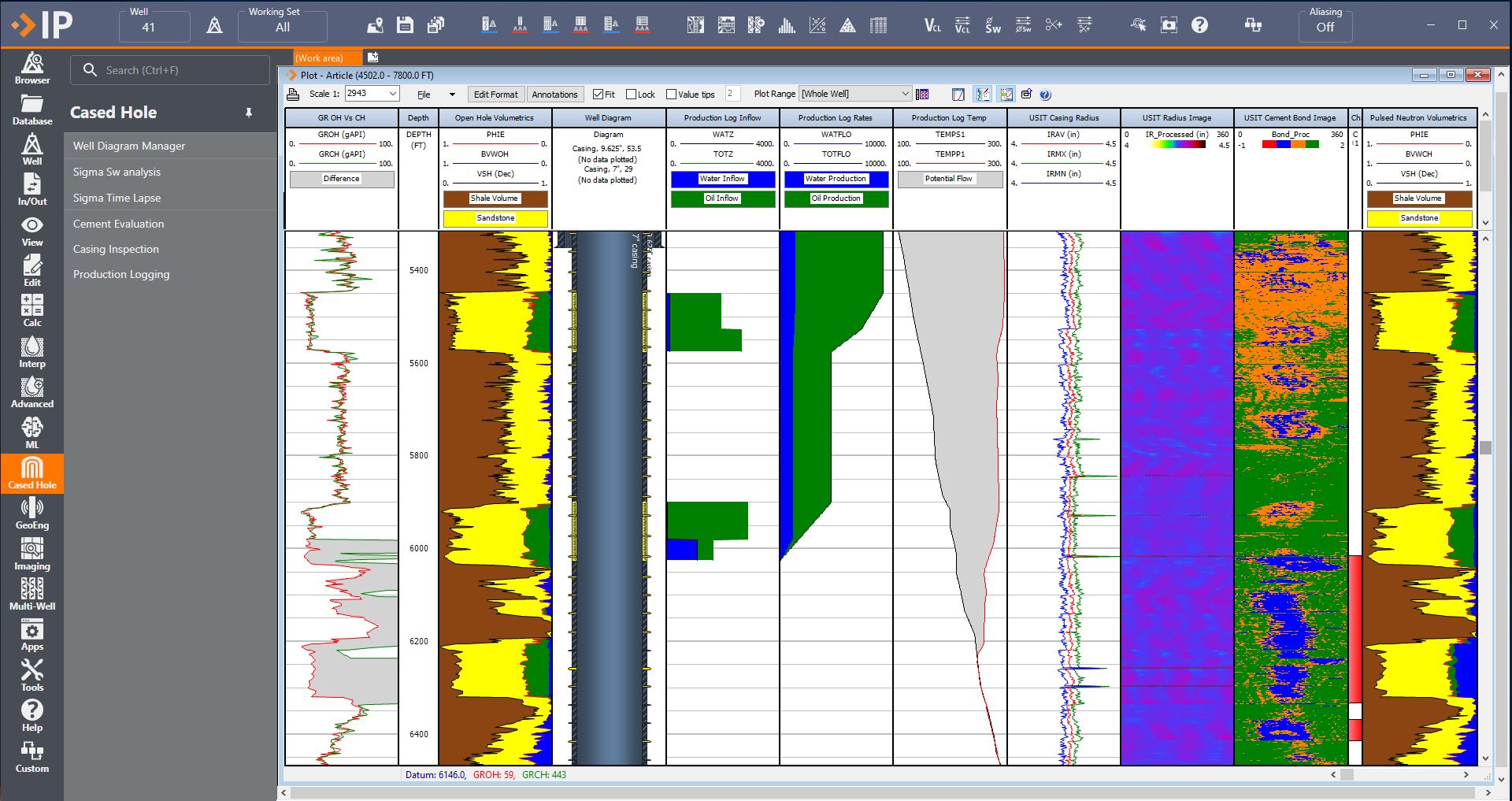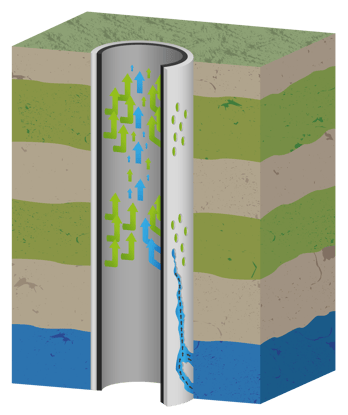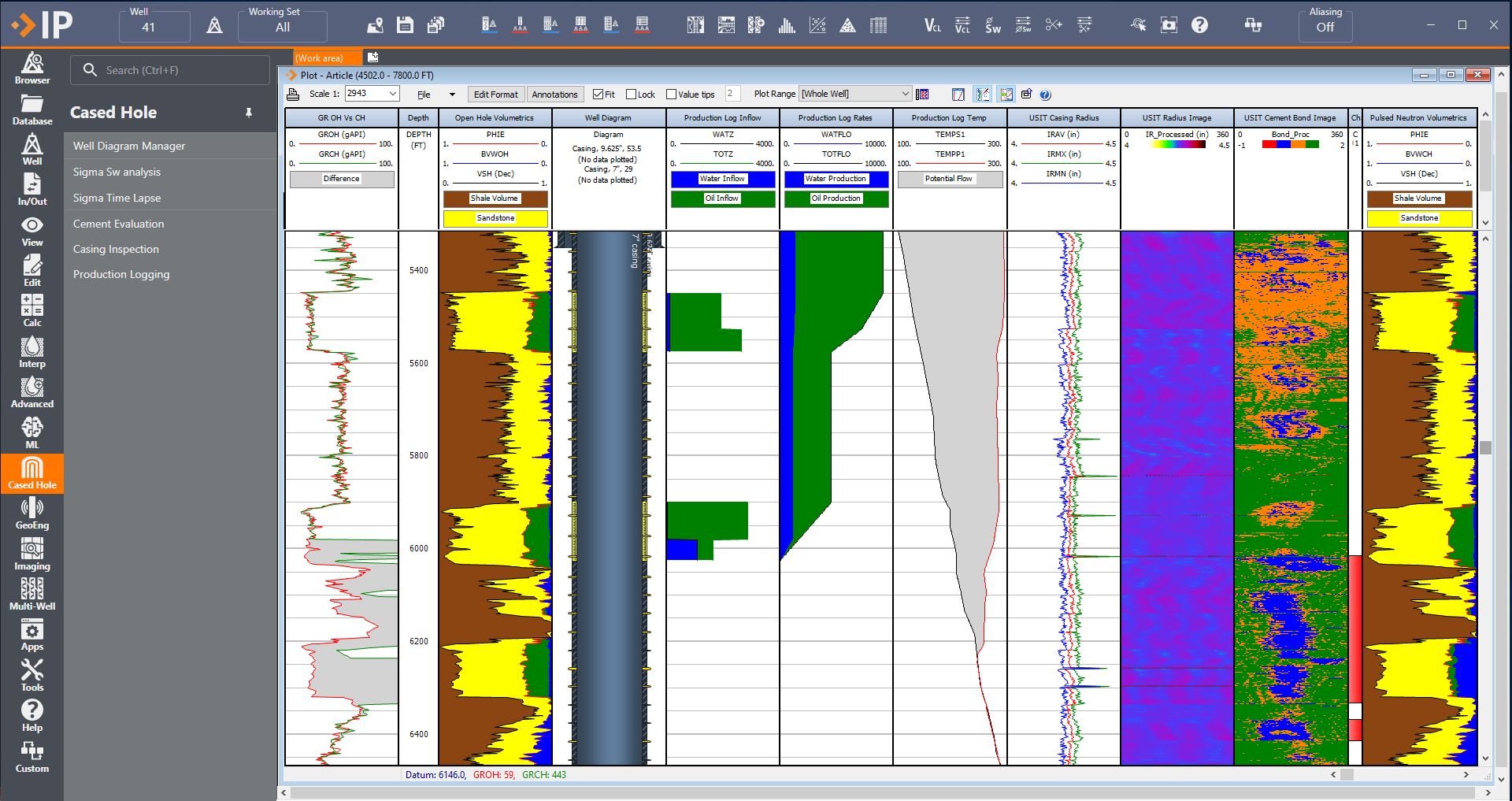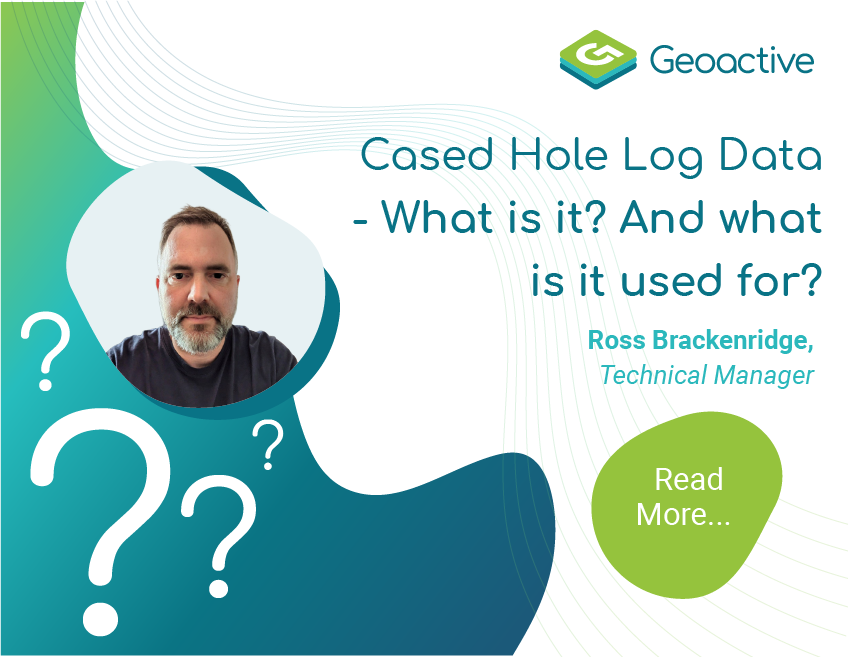Cased Hole Logging: Data Analysis & Use
For those working in other parts of the Energy industry, ‘Cased Hole Logging’ and ‘Cased Hole Data Analysis’ are probably terms you have heard in...

Less exploration, more optimization! The global energy transition is driving fundamental changes in the oil & gas industry. Not least among those is the strategic move away from potential new developments, and a much greater focus on making the most of existing assets.
Ross Brackenridge, Product Manager at Geoactive Ltd says "as the shift gathers pace, operators may increasingly look to take ownership of one specialist area of well technology: cased hole data analysis."
Supporting well integrity, safety and production goals, cased hole analysis has always had a role to play. Its status as a value-adding activity in helping operators meet their core objectives can only grow in a fast-changing industry environment.
It could be said that cased hole logging and analysis has, until now, been something of a poor relation to its open hole equivalent. That is down to a variety of influencing factors.

Beyond enabling operators to monitor well integrity, expert interpretation of the logging data helps them determine well properties as they relate to production. From identification of downhole producing zones, to the calculation of gas, water and oil volumes at each reservoir depth. It also serves to pinpoint production problems and subsequently support the formulation and execution of remedial actions.
The benefits of applying cased hole solutions throughout the entire lifetime of the well are commonly acknowledged in the industry. Why, then, have operators often opted not to take direct responsibility for cased hole data interpretation when they have typically done so for open hole analysis?
There may be a variety of reasons why they’ve preferred to leave the interpretation work to the logging vendors.
Operators may now be actively addressing these issues as they increasingly recognize the safety, integrity and production optimization gains to be secured by pursuing the in-house route.
REGISTER HERE for the upcoming webinar: Cased Hole Analysis in IP!
The safety of their people and the asset, alongside their environment-related commitments, are their areas of paramount concern. And of course, they always retain formal legal responsibility for safety and environmental protection; even if they outsource services, they don’t outsource those core obligations. So given that cased hole activities provide key information across all these matters – extending to the overarching issue of reputation protection – then taking direct ownership of them represents the logical approach. With robust guidelines in place for the management of well integrity, for example, operators may view it as right and sensible to assume full, hands-on responsibility for adhering to these.
In technical terms, bringing data analysis in-house lends itself to standardization, consistency, efficiency and the adoption of best practice across the business: it eliminates the need to reconcile analysis results across regions or multiple suppliers.
Critically, the introduction of a one-stop-shop – an integrated software package – covering both open hole and cased hole data interpretation yields a succession of further advantages.
It not only streamlines software requirements, but significantly empowers operator teams with more and better data that expedites insights and enhances decision-making – and incrementally realizes cost efficiencies.
Those have been the principles behind the development of cased hole analysis suites within our industry: they’ve certainly shaped and informed ours as we’ve developed and demonstrated its capabilities in international energy regions.
To use it as an example, our Interactive Petrophysics (IP) for Cased Hole Analysis, features a set of modules covering all key areas: cement evaluation, production logging, casing inspection and pulsed neutron analysis (which determines reservoir water saturation through the casing).
We’ve invested in our cased hole analysis proposition precisely because we anticipate the market will increasingly turn to such solutions as operators seek to make the most of their investment in producing assets.
We believe such a single-package solution will more than prove its value over the coming years. It will serve as an internal data hub on individual wells – supporting the development of collective team knowledge and representing a valuable asset in itself.
It grows as an in-house resource as new data is accrued, and the accumulation of multiple data sets in one place realizes more substantial – more complete – insights into well performance. Only by comparing it with cased hole production logging data, for example, can a full understanding of open hole interpretations be gained in areas such as permeability, saturation height and hydraulic flow. Equally, well underperformance can only be fully investigated with access to both open hole formation evaluation and cased hole production logging, as the issue may well be associated with the formation and/or well completion.
Its in-house status facilitates further interrogation of the base data or resulting analysis at any time to deliver new insights. With 24/7 operator access to analytics capabilities, it offers a faster route to interpretation outcomes which underpin operational decisions.
Commercially, we can anticipate that cased hole data analysis will become a more costly line item to source from third parties because of the growing industry demand for specialist well integrity and production optimization support. Operators can look to secure savings in the longer term with their own internal software package and associated skills.
There is also a wider benefit for operators – and personnel – already working to advance the energy transition agenda, or planning to do so: cased hole software, and the technical skills which go with it, are certainly transferable to new, alternative subsurface areas such as carbon capture utilization and storage.
In the meantime, in our maturing oil & gas industry, it’s our experience that operators are exploring the potential of in-house cased hole data as an immediate and value-adding option as they look to maximize economic recovery – safely and efficiently – ahead of ultimate abandonment.
Situation: An oil producing well suddenly begins to produce a lot of water. A quick diagnosis is required to ascertain the source of the water and whether it can be shut off.
At first glance: The production log interpretation suggests that the water is entering the borehole at the deepest perforated zone while the temperature suggests movement of fluids below that bottom perforation.
A deeper review: The cement bond log data identifies a potential channel in the cement. From accompanying pulsed neutron data – of which key inputs include clay volume and porosity from open hole petrophysical analysis – it is confirmed that the lowest perforated zone is still oil-bearing, and that the water source is indeed below the perforated zone and is travelling through the channel in the cement.
A holistic approach to data: If each of the cased hole and open hole data sets had been interpreted at different times in different software packages by different analysts, the issue may not have been correctly diagnosed.
By using a single software package such as IP, interpretations can be made simultaneously by the same person, creating much more comprehensive insights to support correct diagnosis. Without the insights gained from interpreting the variety of cased hole data sets together – and doing so alongside the available open hole data, it would have been easy to assume the lowest perforated zone was the source of the water, leading to an ill-advised decision to shut off an oil-bearing zone, with the potential for dire commercial consequences.

The above represents just one of many scenarios where a holistic approach can deliver direct gains, not just in commercial terms but also in the safety sphere by helping operators sidestep potentially serious hazard risks.
Don't forget to REGISTER HERE for the upcoming webinar: Cased Hole Analysis in IP!
Use the Chat to Us option to get in touch with any questions or join our discussions on LinkedIn.
- Ross Brackenridge

For those working in other parts of the Energy industry, ‘Cased Hole Logging’ and ‘Cased Hole Data Analysis’ are probably terms you have heard in...

All petrophysical interpretations carry a degree of uncertainty - this is not a flaw, but a fundamental reality of the process. From the moment data...

When planning and building machine learning models, a question often asked is, “What features should I use as input to my model?”.